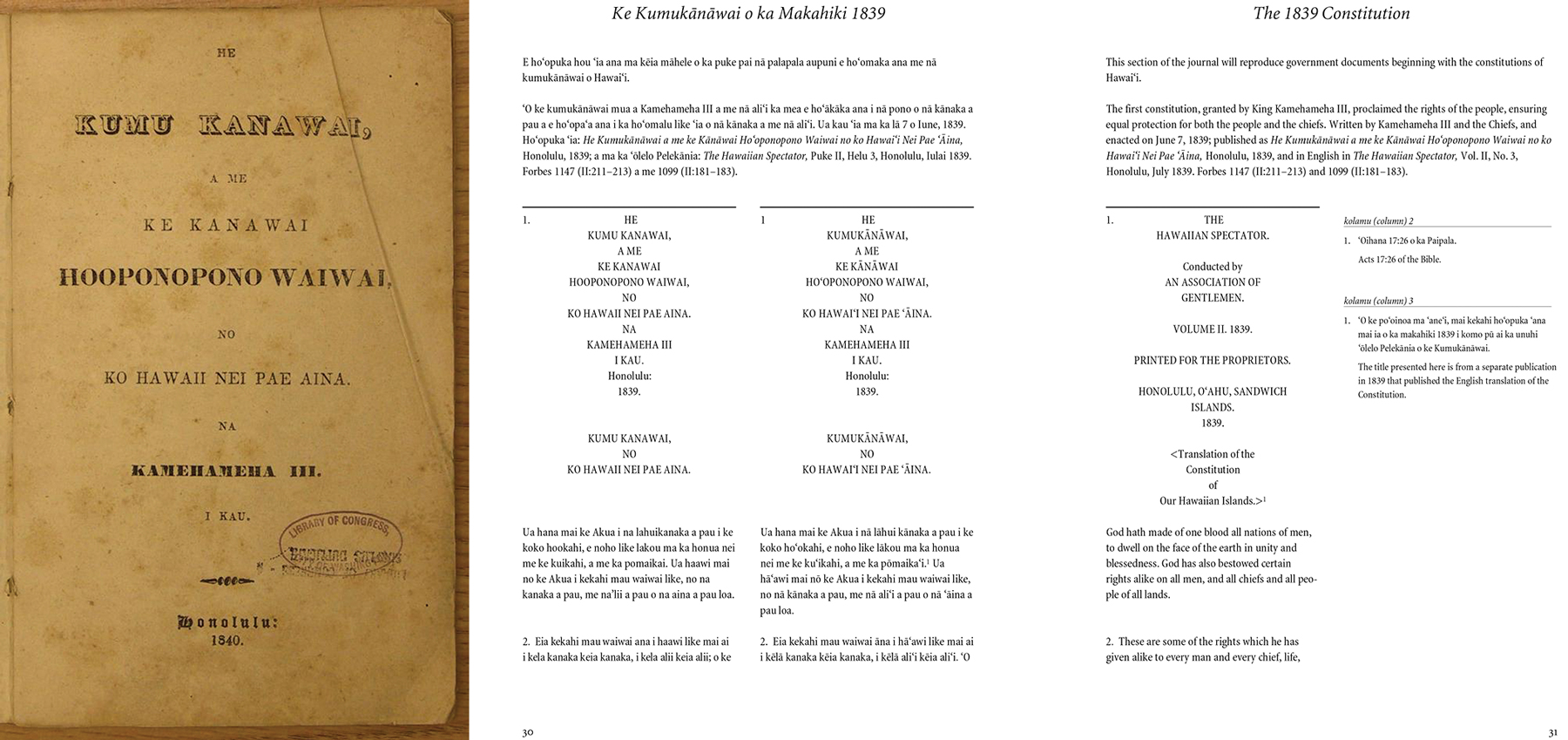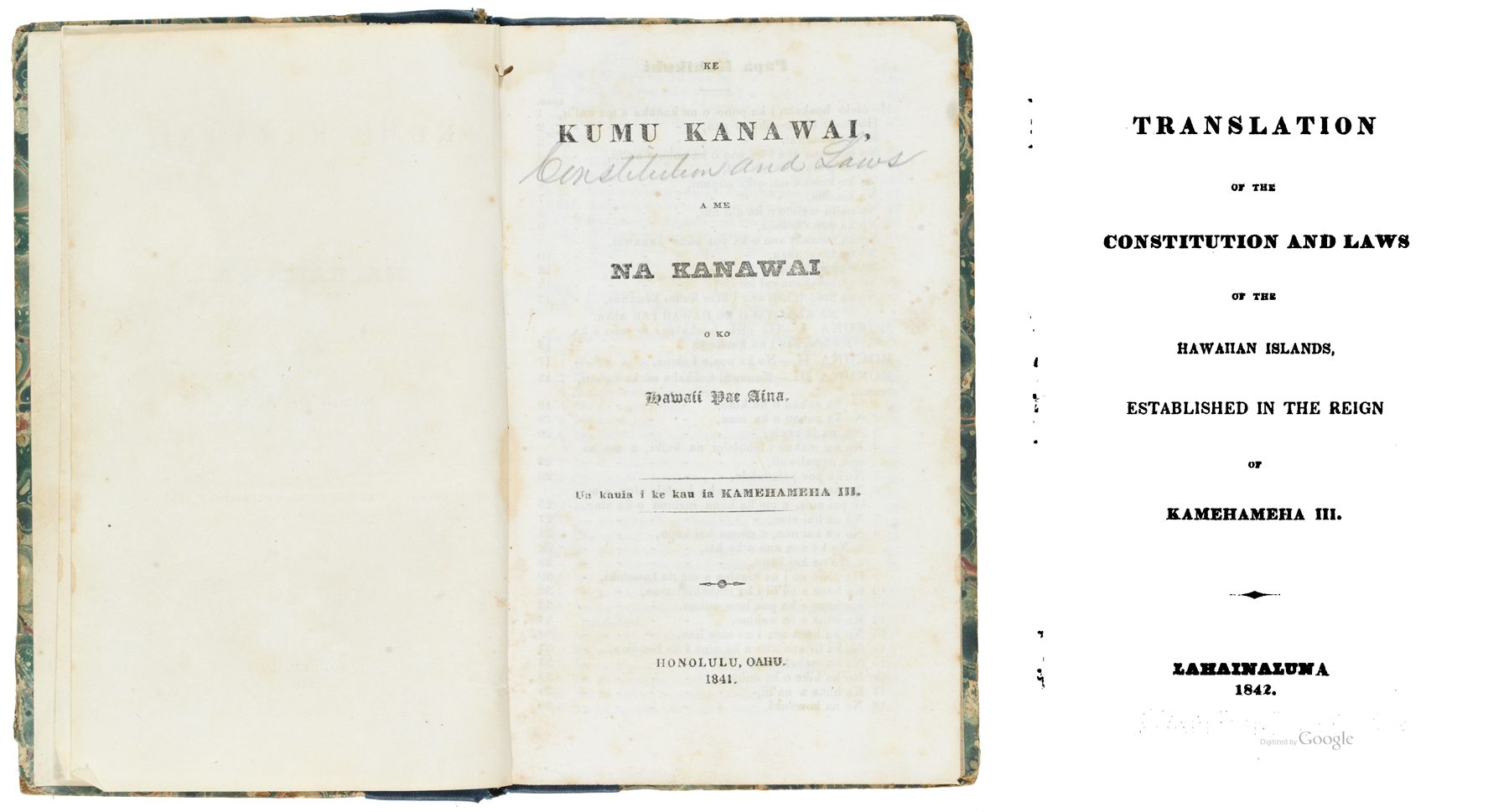
Though sometimes criticized for being a product of Western ideas, the Declaration of Rights and Constitution transformed Hawai‘i. Drafted by ali‘i, the documents gave equal rights to commoners and established a formal government and public school system.
1839 Declaration of Rights
- In summer 1839, following the No Ke Kālai‘āina seminars, the King directed David Malo, John Papa Ī‘ī, Boaz Māhune and others to begin drafting a Declaration of Rights. Like the U.S. Bill of Rights, the Declaration sought to protect the fundamental rights of people and property.
- As the laws were drafted, the council of chiefs robustly debated each one, meeting for “two or three hours a day for five days in succession.”7 When a law received its final reading, “the King inquired of the chiefs if they approved, and on their saying, yes, he replied, ‘I also approve,’ and then rose in their presence and affixed his name.”8
- The Declaration of Rights transformed Hawaiian society by establishing equal rights for both commoners and ali‘i. The social order underwent dramatic change: The king surrendered absolute rule while high ali‘i released much of their control over people. The Declaration further assured the protection of property, “… so that each class might have equal opportunity to enrich themselves.”9 The 24-page pamphlet was published on June 7, 1839.
Constitution of 1840
- The Constitution built upon the Declaration by laying out how the Hawaiian government would work. It created a house of representatives, elected by the people. For the first time, common citizens would have a voice in government.10 The house of representatives and the council of chiefs held joint power to create laws.
- Along with a public-school system, the Constitution also established Hawai‘i’s first independent judicial body, a supreme court.
— Samuel Kamakau, Ruling Chiefs of Hawaii, p. 370

Mixed Reactions
- Within Hawai‘i, protests appeared in the newspapers that lamented the growing presence of Westerners in government.
- Outside Hawai‘i, these documents helped protect the kingdom’s fragile sovereignty. Within four years, America, Great Britain and France officially recognized Hawai‘i’s independence, largely because of its embrace of Western laws.
- Some historians see the Declaration of Rights and Constitution as missionary-driven products, but others hold a different view.
— Kamanamaikalani Beamer, No Mākou Ka Mana: Liberating the Nation, pp. 122 – 123
Upon completion of the Declaration of Rights and the Constitution of 1840, Hawai‘i transitioned to a constitutional monarchy.
7 Hawaiian Spectator, II, July 1839.
8 Ibid.
9 Kingdom of Hawai‘i, Kumu Kanawai no ko Hawaii nei Pae ‘Aina, 1839, Hawaiian Historical Society reprint no. 1157, translation by Lilikalā Kame‘eleihiwa.
10 Kuykendall, The Hawaiian Kingdom , p. 168.
